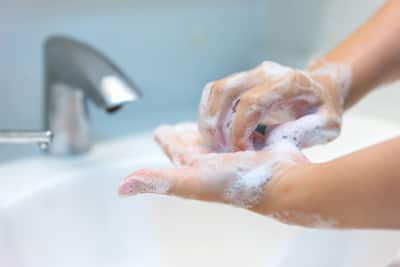Don’t Miss Out on the Latest Updates.
Subscribe to Our Newsletter Today!
What Is The Right Way To Wash Hands To Prevent The Spread of COVID-19?

Good hand hygiene, especially washing our hands, is fundamental in staying protected against all kinds of germs.
When we look back to the beginning of the pandemic in 2020, we instinctively think of all the precautionary measures we would take to stay protected from COVID-19, the deadliest virus outbreak that left the world baffled. It was at this point that people recognized the need to adopt personal and hand hygiene practices. We had to change our hand hygiene habits at the onset of the pandemic. These long-overdue changes finally taught us that hand hygiene is not only a basic habit but also key to staying healthy.
After fighting three waves of the deadly virus, India is currently bracing for the fourth wave of the COVID-19, therefore, it is important to not lose focus on washing and sanitizing our hands. Good hand hygiene, especially washing our hands, is fundamental in staying protected against all kinds of germs. TheHealthSite.com spoke to Dipak Shah, Associate Scientist, Research & Development, Himalaya Wellness Company to understand the basics of hand hygiene.
Hand Hygiene Tips
Here are some quick tips to ensure hand hygiene:
Also Read
- Always wash your hands with soap and water as often as possible, especially before touching your face, consuming food, or treating any kind of wounds. Also be sure to wash your hands after touching surfaces that might be contaminated, such as elevator buttons or door handles. Most importantly, wash your hands after coughing, sneezing, or blowing your nose.
- Never wash your hands in a rush. This is where most of us go wrong, but it is the most important step in hand hygiene. Make sure to scrub your hands, wrists, and between your fingers with soap and water for at least 20 seconds. Remember to also scrub the back of your hands and under your fingernails.
- Use soap or liquid handwash and preferably one with the goodness of Tulsi, Aloe Vera, and Lemon, as they have skin-conditioning and germ-kill properties that help get rid of germs and keep your hands nourished.
- Dry your hands completely. Do not leave your hands wet as moisture can increase the chances of bacteria and germs spreading.
- Wipe your hands with a clean towel or tissue or let them air-dry. Avoid using hand dryers in public restrooms, as they tend to spread more germs.
- It is difficult to keep track of the surfaces you're encountering. Therefore, it is best to carry a pack of hand wipes for protection against germs. Look for one infused with natural ingredients like Aloe vera, Tulsi, and Lemon, as these herbs are known for their skin-conditioning benefits and help soften hands.
- Washing hands with soap and water is the best way to get rid of germs. However, carrying a small bottle of sanitizer is helpful when you do not have access to water and soap. Look out for sanitizers with natural ingredients like Coriander, Ushira, Nutgrass, Neem, and Spiked Ginger Lily, as these herbs are known for their germ-kill properties and help ensure soft and germ-free hands.
- While adults may have the basic knowledge of hand hygiene, parents should guide children and teach them the importance of washing their hands with the right technique mentioned above for at least 20 seconds.
Hand hygiene is a norm that should be followed throughout our lives, and the first step is to follow the rules that apply to ensure clean hands and a healthy body, and thereby, a happy life.
DISCLAIMER: The above article is for information purposes only and is not intended to be a substitute for professional medical advice. Always seek the guidance of your doctor or qualified health care professional for any questions you may have regarding your health or a medical condition.


